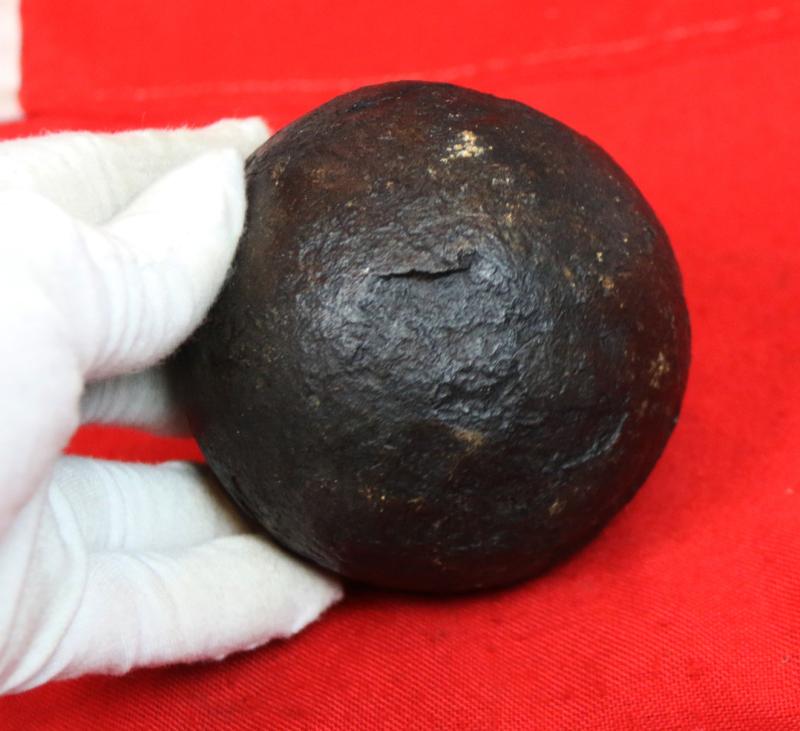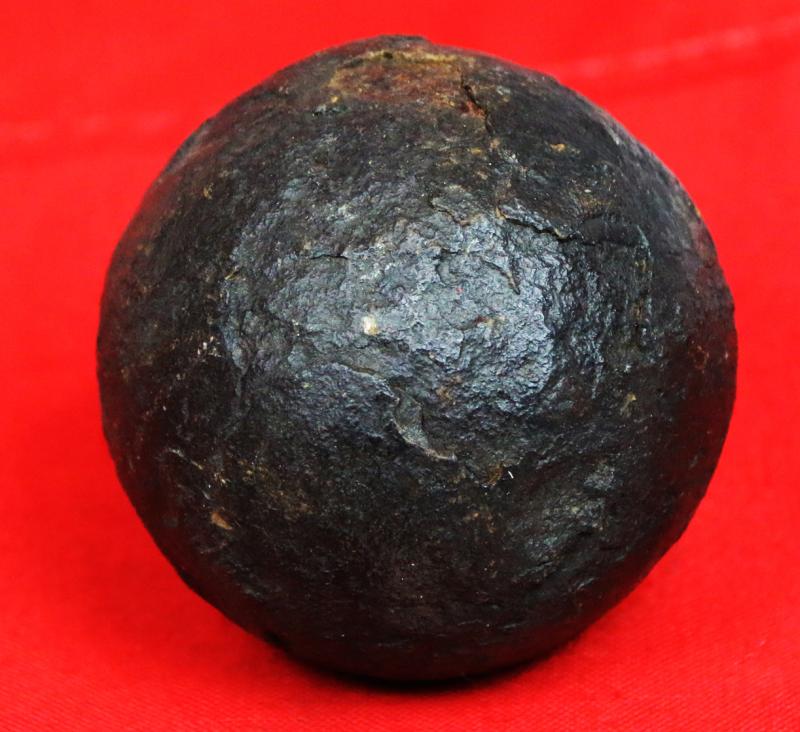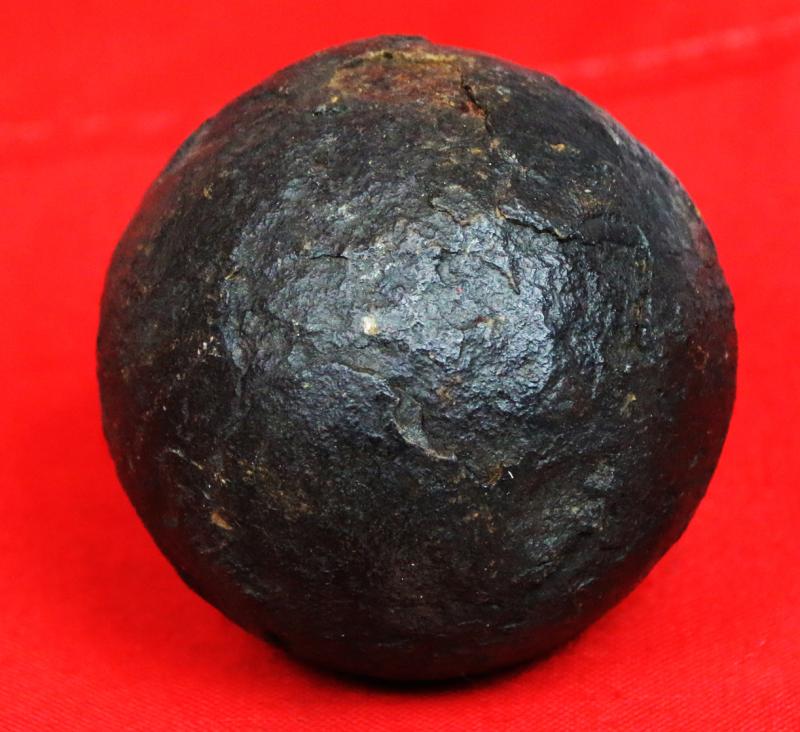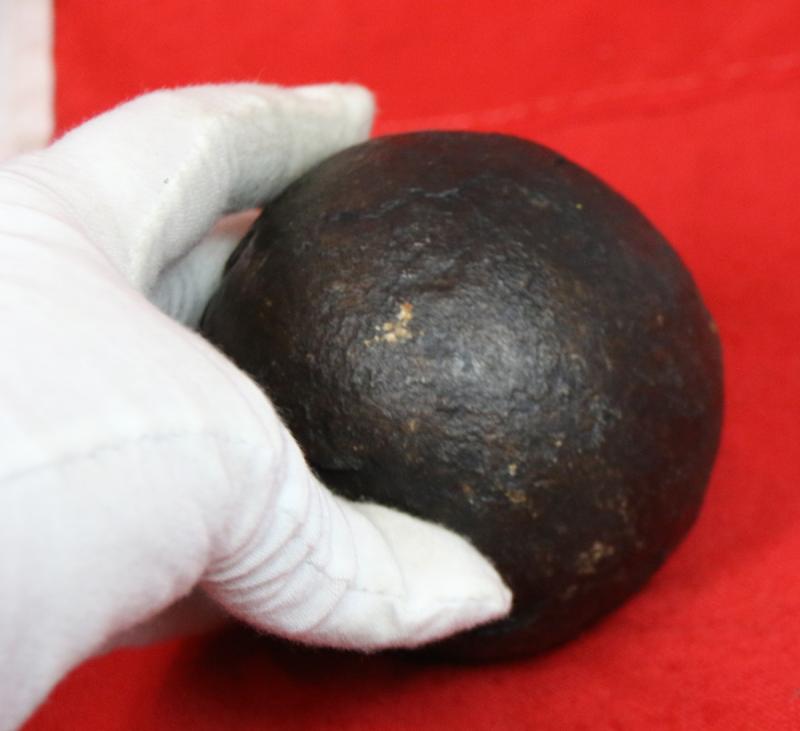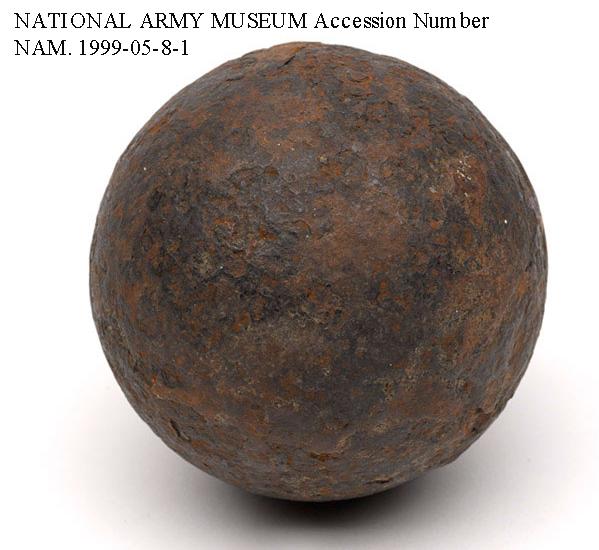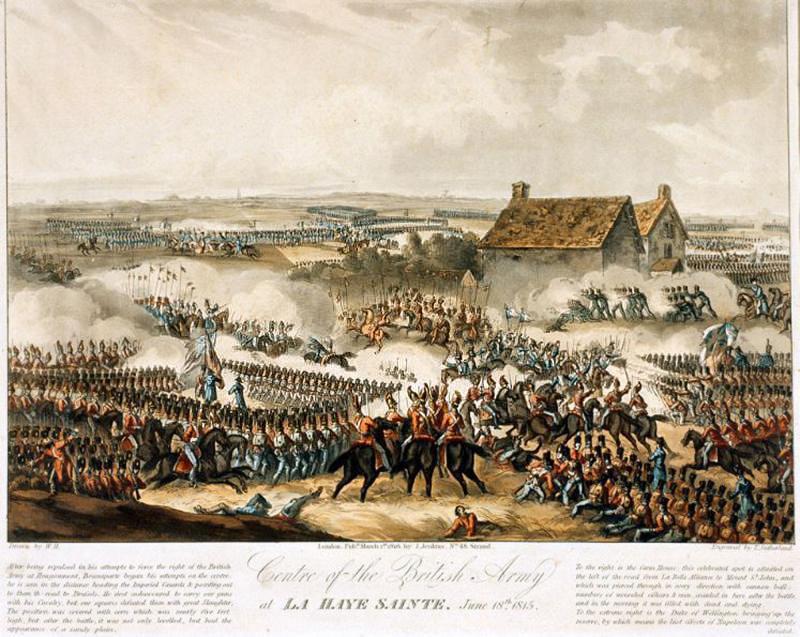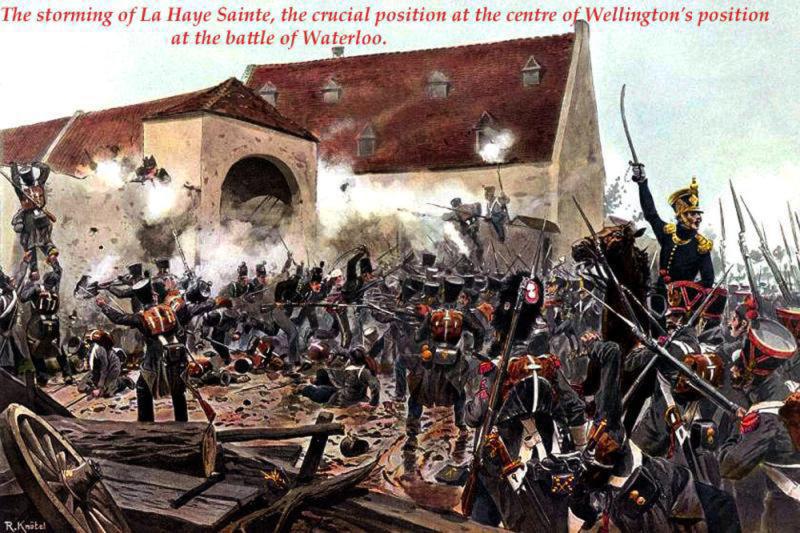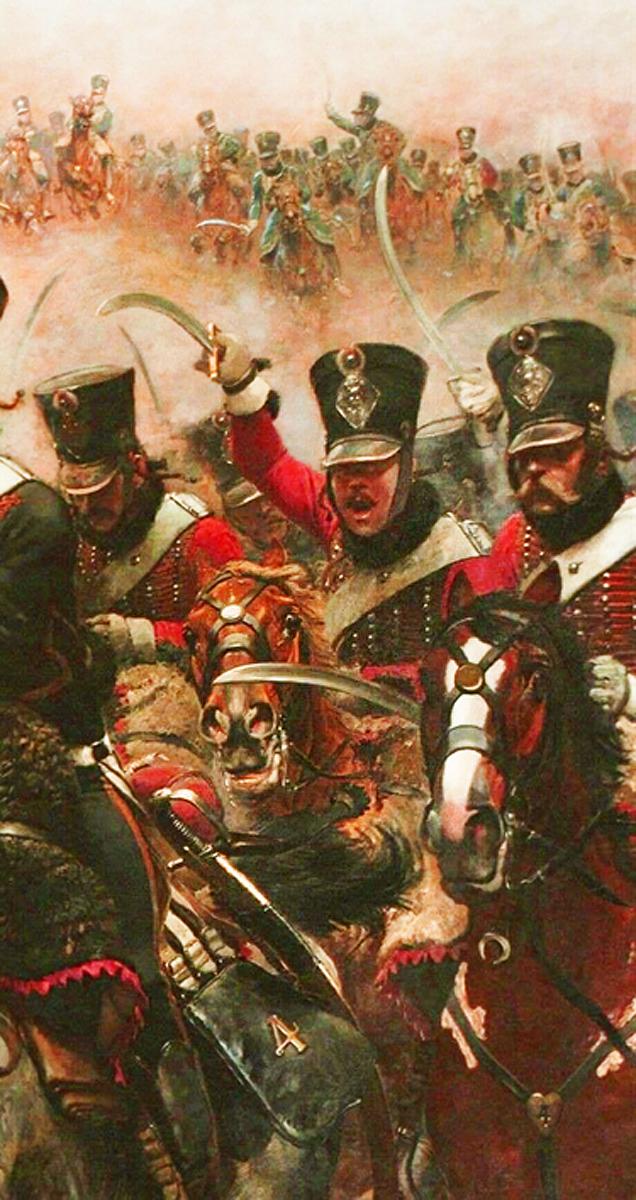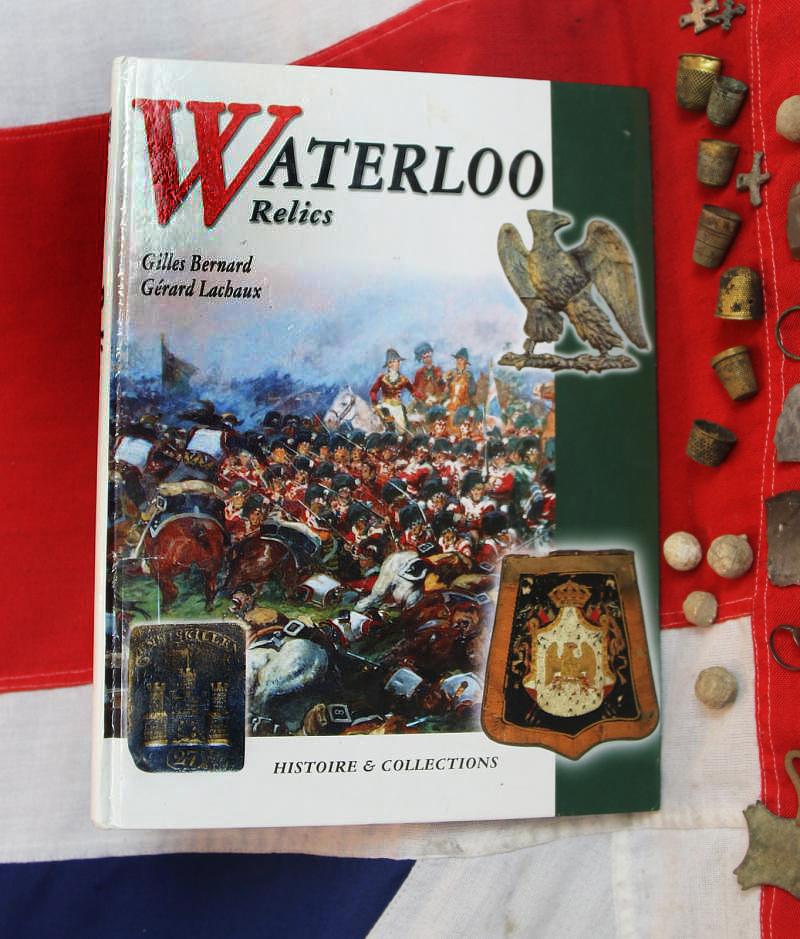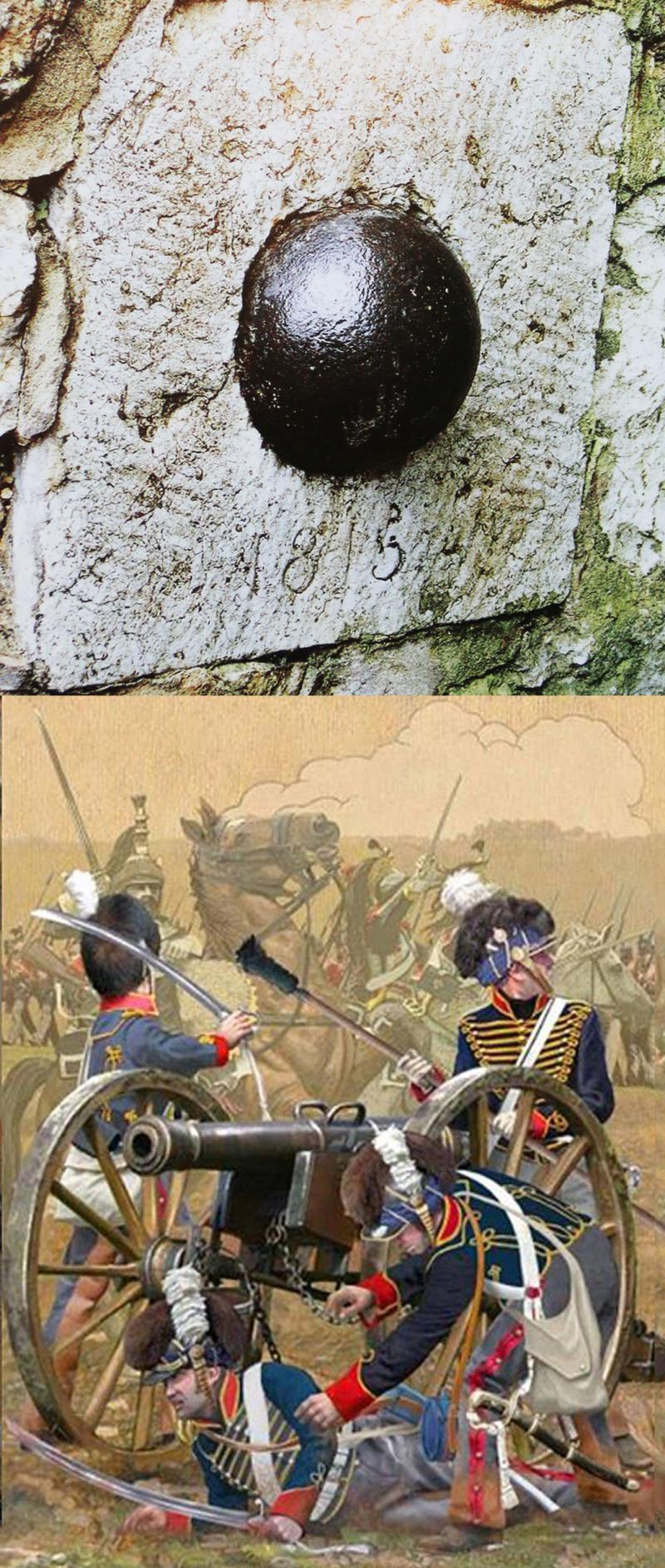A Superb Original Waterloo Recovered Souvenir '6 Pounder ' Royal Artillery Cannon Ball Fired at La Haye Sainte During The Battle, Recovered Around 200 Yards From The Farm
Napoleonic Wars cannon ball recovered from a Waterloo excavation well over 150 years ago.
At the Battle of Waterloo, the British Royal Artillery deployed 6-pounder cannons, from which this ball was fired, a relatively light artillery piece that fired a 6-pound (approximately 2.7 kg) solid iron ball. These cannons, introduced in 1793, were crucial for supporting cavalry charges and were easier to maneuver than heavier guns.
The 6-pounder was designed to provide lighter, yet still effective, artillery support to the cavalry and infantry.
Ammunition:
They fired various types of ammunition, including round shot (solid iron balls), canister shot (a type of scatter shot), and spherical case shot (a type of shell).
The effective range of the 6-pounder with round shot was around 800-900 yards (732-823 metres), though it could reach up to 1700 yards (1554 metres).
The cannonballs were devastating, capable of inflicting serious injury and damage to both men and horses.
At Waterloo, the 6-pounders were primarily used by the Royal Horse Artillery and some field artillery units, with variations in the types of 6-pounders used.
Captured at Waterloo:
Some French 6-pounder cannons were also captured by the British as trophies of war.
La Haye Sainte:
The strategic farmhouse of La Haye Sainte was a focal point of fighting, where the 6-pounder was used extensively.
We show in the gallery a photo of a Waterloo cannon ball embedded in a cemetery wall, from Waterloo Relics by Bernard & Lechaux
Another identical cannon ball is now in the National Army Museum, see gallery.
NAM Accession Number
NAM. 1999-05-8-1
Every single item from The Lanes Armoury, Britain's famous, favourite, and oldest original Armoury Antique store, is accompanied by our unique Certificate of Authenticity. Part of our continued dedication to maintain the standards forged by us over the past 100 years of our family’s trading, and thus, it is a lifetime guarantee.
Code: 25836

